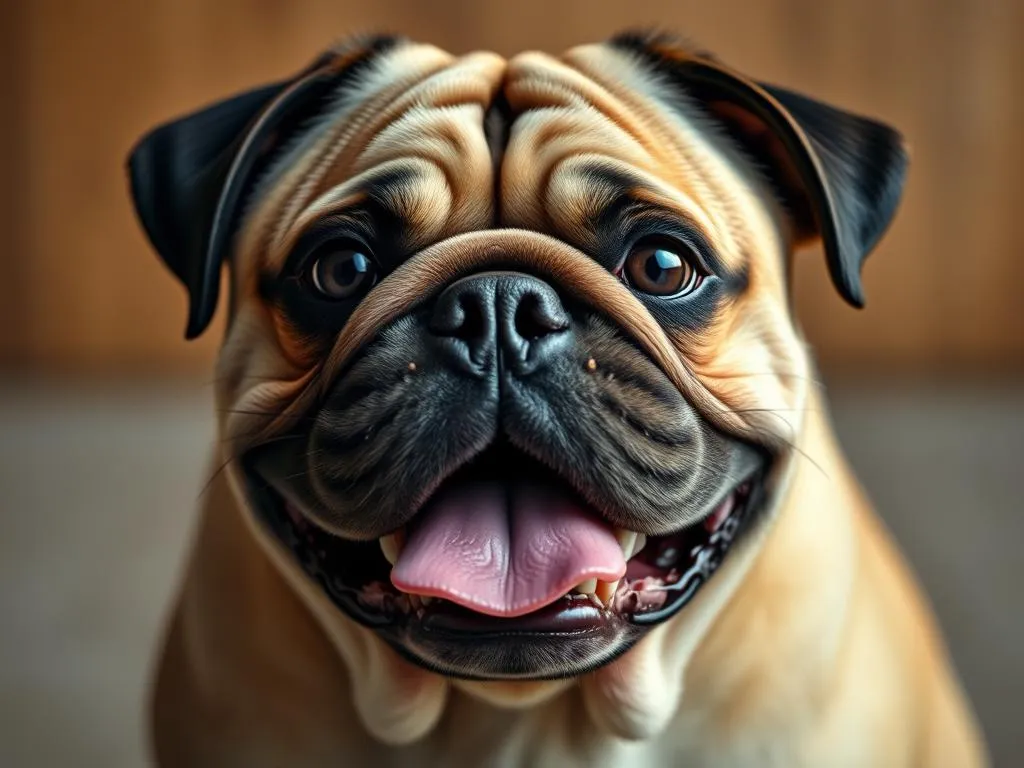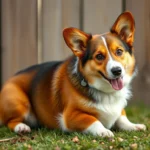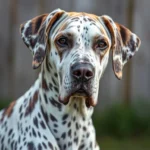
Introduction
When considering the addition of a furry friend to your family, understanding various dog breeds is essential. Each breed comes with its unique traits, needs, and characteristics that can significantly affect your lifestyle and living environment. One fascinating and increasingly popular breed to consider is the American Pugabull, a hybrid dog resulting from the charming combination of the Pug and the American Bulldog. As a potential owner, it’s crucial to delve into the specifics of this breed to ensure it aligns with your family’s needs and lifestyle. This article aims to provide a comprehensive overview of the American Pugabull, exploring its history, physical characteristics, temperament, health care needs, training, and much more.
Overview of Dog Breeds
Definition of Dog Breeds
A dog breed is defined as a specific group of domestic dogs with a common ancestry that share similar characteristics, behaviors, and physical traits. Breeds can vary widely in size, temperament, coat type, and purpose, making it vital for potential owners to understand these factors when selecting a dog.
Types of Dog Breeds
Dog breeds can be classified into various categories, including:
- Working Dogs: Bred for specific tasks like guarding and rescue.
- Herding Dogs: Known for their ability to manage livestock.
- Toy Dogs: Smaller breeds often kept for companionship.
- Hound Dogs: Bred for hunting and tracking.
- Terriers: Energetic and feisty, often used for pest control.
In recent years, hybrid breeds, such as the American Pugabull, have gained popularity, resulting from the intentional crossbreeding of two distinct purebred dogs to create a new breed with desirable traits from both parents.
Importance of Choosing the Right Breed
Selecting the right breed is not just about aesthetics; it involves assessing how a dog’s characteristics align with your lifestyle. Factors to consider include your living situation (apartment vs. house), activity level, and family dynamics. Understanding breed traits is essential for promoting a harmonious relationship between you and your dog, as different breeds have varying needs regarding exercise, training, and socialization.
The American Pugabull
History of the American Pugabull
The American Pugabull is a relatively new hybrid breed that brings together the affectionate Pug and the sturdy American Bulldog. This breed was developed to create a companion animal that features the endearing traits of the Pug while maintaining the strength and loyalty associated with the American Bulldog. The result is a dog that not only looks unique but also possesses a personality that many families find appealing.
Physical Characteristics
The American Pugabull typically presents a unique blend of its parent breeds’ features.
- Size and Weight: These dogs generally weigh between 30 to 50 pounds and stand about 12 to 18 inches tall, making them medium-sized companions.
- Coat Type and Color Variations: Their coat is short and smooth, requiring minimal grooming. Colorations can vary significantly, including brindle, fawn, black, and white, often with a mix of these shades.
- Distinctive Physical Traits: Common traits include a muscular build, a broad head, and a short muzzle, which can sometimes lead to breathing issues similar to those found in purebred Pugs.
Temperament and Behavior
The American Pugabull is known for its lively and affectionate demeanor.
- Personality Traits: They are typically playful, loyal, and excellent companions, making them suitable for families. Their friendly nature often allows them to get along well with children and other pets.
- Socialization Needs: Early socialization is essential to ensure that they grow up to be well-rounded dogs. Exposure to various environments, people, and pets is crucial.
- Common Behavioral Issues: Like many breeds, they can exhibit behavioral problems such as barking or chewing when bored or anxious. Addressing these issues through training and mental stimulation is vital.
Health and Care of the American Pugabull
Common Health Issues
As a hybrid breed, the American Pugabull may inherit health issues from either parent breed. Common concerns include:
- Breathing Problems: Due to their short muzzles, they may experience respiratory issues, especially in hot or humid weather.
- Skin Allergies: Skin problems can occur, requiring regular vet check-ups.
- Joint Problems: Like many medium-sized breeds, they can be prone to hip dysplasia.
Regular veterinary visits are crucial for early detection and management of these health concerns.
Nutritional Needs
A balanced diet is essential for the health of your American Pugabull. Here are some tips:
- Recommended Diet: High-quality dog food formulated for medium-sized breeds is ideal. Look for options with real meat as the primary ingredient.
- Maintaining a Healthy Weight: Due to their propensity for weight gain, monitor their food intake and avoid overfeeding. Portion control and regular feeding schedules can help maintain their ideal weight.
Exercise Requirements
The American Pugabull is an active breed that requires regular exercise to stay healthy and happy.
- Daily Exercise Needs: Aim for at least 30 to 60 minutes of exercise daily, which can include walks, playtime, or interactive games.
- Mental Stimulation: Engaging their minds is just as crucial as physical activity. Puzzle toys and training sessions can provide necessary mental challenges.
Grooming Needs
Grooming your American Pugabull is relatively straightforward:
- Grooming Frequency: Their short coat requires minimal grooming, generally only needing a weekly brush to remove loose hair.
- Dental Care and Ear Cleaning: Regular dental care is essential to prevent oral diseases, and ear cleaning helps avoid infections, especially if they have floppy ears.
Training the American Pugabull
Basic Training Techniques
Training your American Pugabull can be a rewarding experience. Here are some effective techniques:
- Positive Reinforcement: Use treats and praise to encourage good behavior. This method promotes a strong bond between you and your dog.
- Consistency: Establishing a consistent training schedule helps your dog understand expectations and routines.
- Early Socialization: Introduce your puppy to various people, environments, and other dogs to foster good social skills.
Common Behavioral Issues and Solutions
Understanding common behavioral issues can help you address them effectively:
- Barking: Excessive barking can be managed by identifying triggers and training them to be quiet on command.
- Chewing: Providing appropriate chew toys can help alleviate unwanted chewing behavior.
- Jumping: Teaching your dog to sit before receiving attention can reduce jumping.
Advanced Training and Activities
Once basic commands are mastered, consider advanced training options:
- Agility Training: This can be a fun way to exercise your dog mentally and physically while strengthening your bond.
- Obedience Competitions: Participating in competitions can provide a sense of achievement and enhance your dog’s discipline.
Continued training not only promotes good behavior but also contributes positively to the overall well-being of your American Pugabull.
Living with an American Pugabull
Ideal Living Conditions
The American Pugabull can adapt to various living situations, but certain conditions are more suitable:
- Best Environments: They thrive in homes with a yard but can also adjust well to apartment living if given sufficient daily exercise.
- Yard Space: Access to a secure outdoor area is beneficial for playtime and exercise.
Family Dynamics
The American Pugabull is known for being friendly and affectionate, making it a great addition to families:
- Interactions with Children: They typically do well with kids, exhibiting playful and gentle behavior.
- Introducing New Pets: Proper introductions are crucial. Allow your new dog to meet existing pets gradually to foster a harmonious environment.
Lifespan and End-of-life Considerations
The average lifespan of the American Pugabull ranges from 10 to 15 years. As your dog ages, consider:
- End-of-life Care: It’s important to maintain regular vet visits as your dog ages and to discuss any changes in behavior or health with your veterinarian.
- Decision-making: When the time comes, making compassionate decisions regarding end-of-life care is vital for your pet’s comfort.
Conclusion
The American Pugabull is a unique and delightful breed that offers companionship, loyalty, and love. Understanding its characteristics, care requirements, and behavioral traits is essential for any potential owner. The responsibility of dog ownership is significant, but the rewards are profound. Whether you’re considering adopting or purchasing an American Pugabull, it’s a choice that can bring immense joy and fulfillment to your life.
This thorough guide provides insights into the American Pugabull, ensuring that you are well-equipped with the necessary knowledge to make informed decisions about dog ownership. Remember, the right dog can enhance your life in ways you never imagined!









